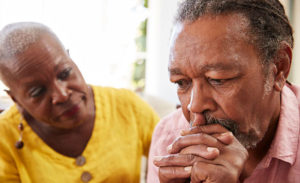This op-ed was authored by Dr. Octavio N. Martinez Jr., executive director for the Hogg Foundation for Mental Health and senior associate vice president for diversity and community engagement at The University of Texas at Austin. It was originally published by MediaPlanet.
There has been a welcome shift toward acceptance of men’s emotional vulnerabilities and a need for mental health support. However, there is still plenty of evidence that men and boys continue to be hemmed in by social conditioning and cultural messages that erode their well-being.
For minority men and boys, the situation is more complicated. A recent study by the Centers for Disease Control and Prevention looked into mental health treatments in men 18-44 who had daily feelings of anxiety or depression. It found that only 26.4 percent of Hispanic and non-Hispanic black men went in for mental health treatments. That was significantly less than the 45.4 percent of non-Hispanic white men who sought treatment.
Why the disproportion?
The expectation that “real men” avoid asking for help provides only a partial answer. For men and boys of color, additional risk factors include higher exposure to poverty and violence, lack of economic opportunity and higher rates of incarceration.
The effect is a double whammy: Add the stigmatization of help-seeking behavior by men of all races to the unique stressors faced by men and boys of color, and it’s no wonder men and boys of color are at higher risk for isolation and mental health problems. These challenges can manifest as substance use or acting out through violence and aggression — which can lead to more stigma and a continuation of the cycle.
Failing to recognize these social determinants of mental health weakens our understanding of what protective measures look like and limits our ability to imagine solutions.
Ending the cycle
Where do we go from here? A 2014 report by the Prevention Institute, Making Connections for Mental Health and Wellbeing Among Men and Boys in the United States, contains some excellent starting points. These include:
- Focus on community-level approaches. Focusing on the individual can only go so far. Find ways to involve men and boys in collaborative efforts to identify solutions that enhance well-being and resilience in their communities. Picture the difference between anti-drinking campaigns — those that treat the individual — and community efforts to decrease alcohol outlet density — treating the social determinant.
- Meet men and boys where they are. Rather than focusing on what men aren’t doing, leverage what they are doing. Imagine mental health supports in the places where men and boys are: coffee shops, bars, barber shops, gyms, parks, schools, places of worship and workplaces.
- Help men and boys connect to each other and to expanded understandings of masculinity and cultural identity. Stigma fades when men and boys see resilience and mental health self-care modeled by their fathers, brothers, teachers, faith leaders and friends. Seek ways to demonstrate the connection between individual mental health and popular traditions of mentorship, cultural pride, self-emancipation and community action among men.
Men and boys of color are well aware that they are seen as problems first and people second. For those who live with mental health challenges, this experience is intensified. We can change this dynamic by illuminating the relationship between men’s personal self-care and well-being at the community level. Men and boys can be newly invigorated by seeing the connection between good mental health and their higher aspirations for themselves, their families and their communities.

